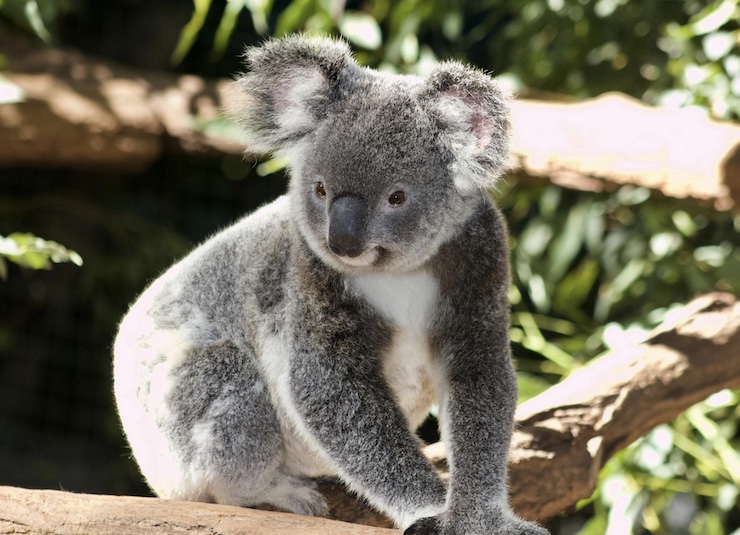Using Drones for Koala Bear Conservation

As the global climate has changed, the world has seen an increase in wildfires. The Australian wildfires of 2019-2020, also known as the Black Summer, were one of the most devastating wildfire seasons ever recorded on the continent. The fires consumed more than 24.3 million hectares of land, destroyed 3,000 buildings, and claimed the lives of 34 people. Additionally, Australia’s wildlife was greatly impacted by the catastrophe. The World Wildlife Fund estimated that nearly 3 billion animals were either killed by flames or smoke inhalation, or displaced due to habitat loss.
Australia is famous for its unique wildlife. Animals like kangaroos, dingoes, Tasmanian devils, and koalas, to name just a few, are endemic to the country. Many of these animals, like the koala, are endangered, a status that was further exacerbated during the Black Summer. Koalas, one of the most beloved of Australia’s native creatures, have been on the Endangered Species list since 2014. Relying on eucalyptus trees for both habitat and diet, koala populations are particularly vulnerable to wildfires. Fortunately, organizations like the Australian Wildlife Conservancy (AWC) have set up reserves, such as the Waulinbakh Wildlife Sanctuary, in an effort to protect and reestablish Australia’s endemic animal and plant species.
The Waulinbakh Wildlife Sanctuary, located on the Traditional Lands of the Worimi Nation, is about 3 hours north of Sydney. The reserve was purchased by the AWC in 2022. As explained on the organization’s website, “The sanctuary protects 3,970 hectares of native forest and rich, dense rainforest gullies. These habitats protect a diverse range of threatened and declining species, giving the sanctuary significant conservation value. The sanctuary is located in an area recognised [sic] by the NSW Government as being of regional Koala significance and is expected to provide a major contribution towards the conservation of the iconic marsupial.” The website further notes that populations of species within the sanctuary are currently being surveyed.
To conduct these population surveys accurately, the right tools are essential. This is where drones come in: they are equipped with technology that allows them to observe and collect data without disturbing creatures in their natural habitats. Leading the charge is Andy Howe, AWC Senior Field Ecologist. Although Andy officially started working with the AWC in 2017, he first learned about the organization as a university student and had the privilege of volunteering on several AWC projects. In his current position, Andy is grateful for the edge that drone technology provides to those working in conservation.
Andy explained that he and his team had a general idea of where to begin searching for koalas within the sanctuary, based on bioacoustic research previously conducted in the area. This process involves collecting acoustic data to analyze the distinctive calling sounds unique to individual species. “At the time, we had high Koala calling rates in two areas within the central and north-east corner of the sanctuary,” Andy said. Using these locations as starting points, Andy and his team launched drones equipped with infrared cameras capable of identifying animals hiding within the dense forest foliage.
The drone footage proved to be a vital tool in conservation planning for koalas in the sanctuary. In total, the drone’s camera allowed the team to identify 10 individual koalas. “Encountering 10 Koalas is a great result,” Andy said. “It indicates that the Koala population at Waulinbakh Wildlife Sanctuary is robust, giving us a great platform to work from and emphasising [sic] the site’s significance as a critical refuge for the endangered species in the region. From the drone footage, we were able to ascertain that all Koalas looked healthy. They had full and uniform coats of grey and bright white fur, no clouding or discharge in the eyes from conjunctivitis, and no staining on the rump from chlamydia – a great sign!”
Among the animals identified by the drones was a mother koala cuddling her joey, or baby koala. Finding this familial pair was especially exciting for the team, as it not only confirmed that the population is healthy, but also that it is growing. The data collected by the drones is just one of many steps in ongoing conservation efforts. The AWC estimates that as many as 300 species of animals call the Waulinbakh Wildlife Sanctuary home. Using drones to observe these mammals, reptiles, birds, and amphibians will provide conservationists with the information they need to ensure a healthy ecosystem.
|